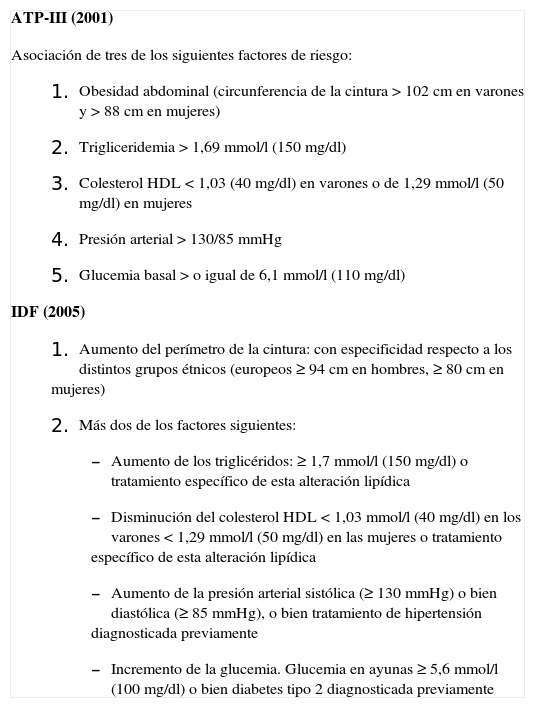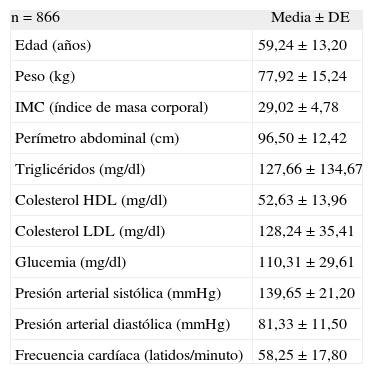Recientemente se han descrito por la International Diabetes Federation (IDF) unos nuevos criterios para la definición de síndrome metabólico (SM). Nuestra intención ha sido valorar si existen diferencias al aplicar estos criterios con los clásicos de la National Cholesterol Education Program-Adult Treatment Program III (NCEP-ATP III). Al mismo tiempo, hemos querido confirmar si nuestra descripción previa de alteraciones hepáticas presentes en los pacientes afectos de SM se confirmaba en una muestra más amplia de pacientes, y si existían diferencias en estas y otras variables al aplicar ambos criterios.
Material y métodosPara ello, hemos estudiado una muestra de 866 pacientes de una unidad de riesgo cardiovascular, registrando diferentes variables biomédicas y analíticas.
Resultados y discusiónAl aplicar los criterios de SM según las dos definiciones, a pesar de que la prevalencia total de síndrome metabólico es similar en ambas, las poblaciones etiquetadas de SM no coincidían en un porcentaje significativo de pacientes (11%). También había diferencia a la hora de identificar la frecuencia de SM en cuanto al sexo: mientras al aplicar el criterio de IDF el sexo masculino era el más frecuente, al aplicar el ATP III lo era el sexo femenino. Al relacionar ambos tipos de criterios con las diferentes variables cuantitativas analizadas hemos hallado lo siguiente: en el síndrome metabólico por ATP III había un incremento de la albuminuria (p=0,038), mientras que por el criterio de la IDF había un aumento de niveles de ALT (p=0,026) y de la tasa de ALT/AST (p<0,016).
ConclusiónHacen falta más estudios para valorar cuál es la definición más útil de cara a prevenir eventos cardiovasculares futuros
The International Diabetes Federation (IDF) has recently proposed new criteria to define metabolic syndrome (MS). The aim of this study has been to determine the differences between these criteria and those of the classical National Cholesterol Education Program-Adult Program III (NCEP-ATP III). We have also aimed to determine whether our previous description of hepatic disorders in MS patients would be confirmed in a larger sample of patients and whether there were any differences between these and other variables when applying the two diagnostic criteria.
Material and methodsA sample of 866 patients from a cardiovascular risk unit was studied, recording biomedical and analytical variables.
Results and discussionTotal prevalence of MS was similar for both definitions, however the SM identified population did not match in a significant percentage of patients (11%). There were also differences between genders: MS was more frequent in males using IDF criteria, but more frequent in females with ATP III criteria. The following was found when both types of criteria were related with the different quantitative variables analyzed: there was an increase in albuminuria (p=0.038) in the ATP III MS patients while the IDF MS patients had a significant increase in ALT (p=0.026) and ALT/AST ratio (p<0.016).
ConclusionFurther studies are needed to evaluate which of the two criteria are more useful for the prevention of future cardiovascular events.
Article
Diríjase desde aquí a la web de la >>>FESEMI<<< e inicie sesión mediante el formulario que se encuentra en la barra superior, pulsando sobre el candado.

Una vez autentificado, en la misma web de FESEMI, en el menú superior, elija la opción deseada.

>>>FESEMI<<<












